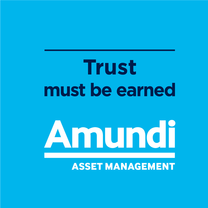Newsroom

Stay on course, despite looming noise
While still benefitting from a global synchronised growth outlook (likely peaking), financial markets are getting nervous, experiencing the fatigue of a more mature phase with new sources of volatility arising. For the future,
it will be key to anticipate how the exit of Central Banks (CB) from unconventional policies will unfold, while talks about protectionist policies start to intensity and we enter a phase of “slowing economic acceleration”, with growth above potential in most Developed Markets (DM), but decelerating in 2019.
President Trump has recently signed tariffs into law in an effort to boost the competitiveness of US producers, reduce the widening US trade deficit, and, ultimately, reinforce his nationalistic political support. At this stage, we do not expect to see a full-blown trade war, despite some recent escalation with China. However, this is emerging as a new source of volatility just when liquidity is diminishing and financial conditions are expected to tighten. Consequences of protectionist threats could be far-reaching if the disputes spread further: the potential for retaliation and that more industries are targeted could undermine confidence and investment decisions. This could end up threatening the benign growth scenario in a kind of stagflationary environment, further adding to CBs’ conundrum: wait longer before going ahead with the removal of monetary stimulus (especially the ECB and the BoJ) or react more aggressively (the Fed) to supply side inflationary pressures, which could be exacerbated by the tight labour market conditions. The US February labour report highlights that the slack in the labour market is shrinking, and shows a particularly resilient goods producing sector in terms of payroll creation. Hence, the Fed would likely progress with rate hikes in an effort to cool down cyclical price pressures. On inflation, however, we don’t see a structural change yet, as the response of wages to a tighter labour market still appears to be very limited (flat Phillips curve).
With this backdrop, our view is that investment opportunities will be in the relative value space, due to: the decoupling (different monetary policy stances) between the Fed, on the one hand, and the ECB and BoJ, on the other; different stages of the economic cycle for different countries; and sensitivity to external factors.
In fixed income, we continue to see global upside pressure on rates, though with different adjustment speeds. In terms of investment strategy, we advocate broadening sources of diversification in different directions: adopting a global approach, which combines multiple alpha(1) strategies, and a more diversified approach within the credit market. On the equity side, earnings should continue to be the real driver of returns. The outlook is still constructive here. However, in the medium term, it is crucial to assess the scope of a structural upward revision of the trend for earnings to assess the potential of further market upside, or on the other side, the risk of a “boom and bust scenario”, like in the 1990s. In Europe, we expect earnings to grow at a trend of around 6% (slightly higher for cyclical sectors). In the US, we see forces at work that could potentially lead to structurally higher earnings per share (EPS), including the consequences of President Trump’s fiscal policies (ie, infrastructure and capex revival). However, to label this a structural revision, in our view, we would also need an acceleration in productivity growth and we are still cautious on this. Hence, we expect an extension of the current earnings cycle, but we currently see it as more cyclical than structural. On equities, as volatility is trending higher, defensives may be back in focus, but it’s probably too early to see a massive rotation towards defensive sectors.
All in all, we believe it is key to maintain an active investment approach, with a strong focus on both stock selection and sector allocation. As there are still clear risks of a new market correction (new sources of volatility, no rotation of style/sector yet, and valuation not particularly compelling), hedging strategies remain paramount.
(1): Alpha: The additional return above the expected return of the beta adjusted return of the market; a positive alpha suggests risk-adjusted value added by the money manager versus the index.
Expert
Vincent has been Group Chief Investment Officer since February 2022. Previous to that, he was the Group Deputy CIO of Amundi since 2015. He is a member of the Globa[...]
Read moreAbout Amundi
About Amundi
Amundi, the leading European asset manager, ranking among the top 10 global players[1], offers its 100 million clients - retail, institutional and corporate - a complete range of savings and investment solutions in active and passive management, in traditional or real assets. This offering is enhanced with IT tools and services to cover the entire savings value chain. A subsidiary of the Crédit Agricole group and listed on the stock exchange, Amundi currently manages more than €2.3 trillion of assets[2].
With its six international investment hubs[3], financial and extra-financial research capabilities and long-standing commitment to responsible investment, Amundi is a key player in the asset management landscape.
Amundi clients benefit from the expertise and advice of 5,600 employees in 35 countries.
Amundi, a trusted partner, working every day in the interest of its clients and society
Footnotes
- ^ [1] Source: IPE "Top 500 Asset Managers" published in June 2024 based on assets under management as of 31/12/2023
- ^ [2] Amundi data as at 31/03/2025
- ^ [3] Paris, London, Dublin, Milan, Tokyo and San Antonio (via our strategic partnership with Victory Capital)
Footnotes




